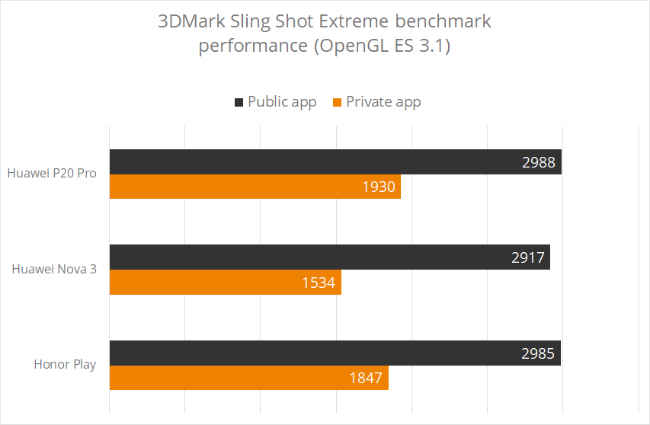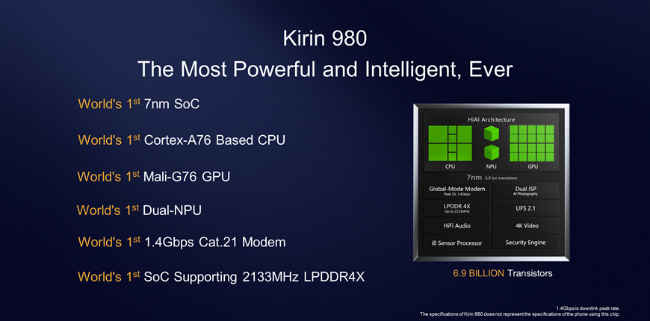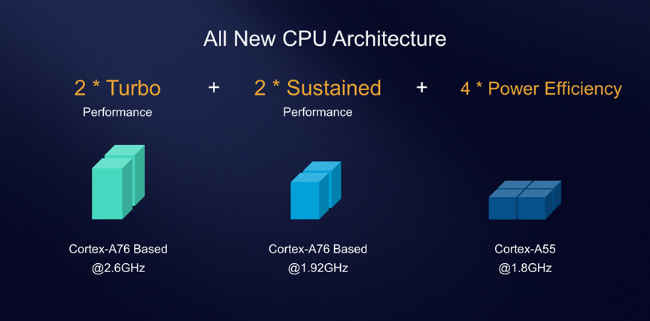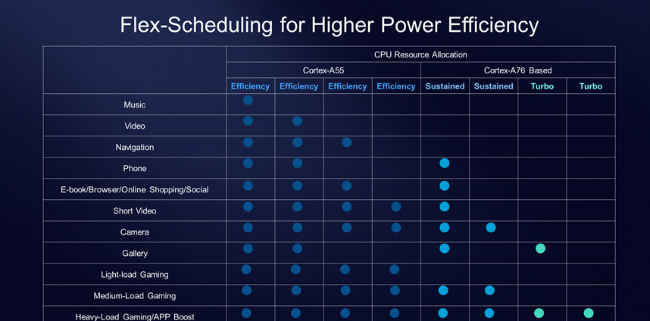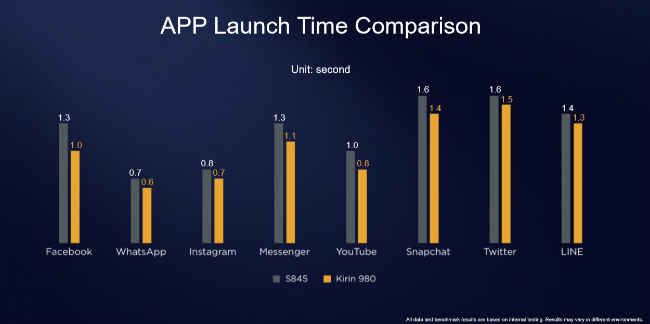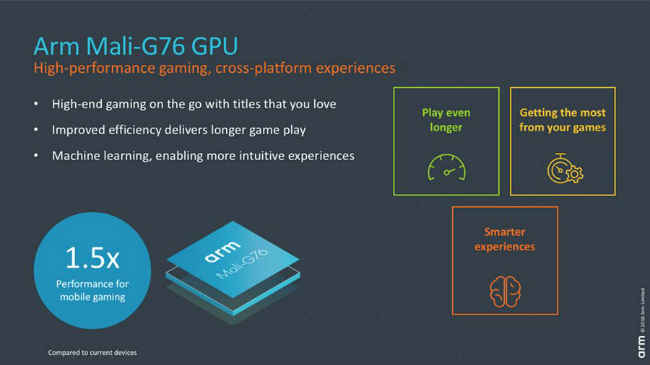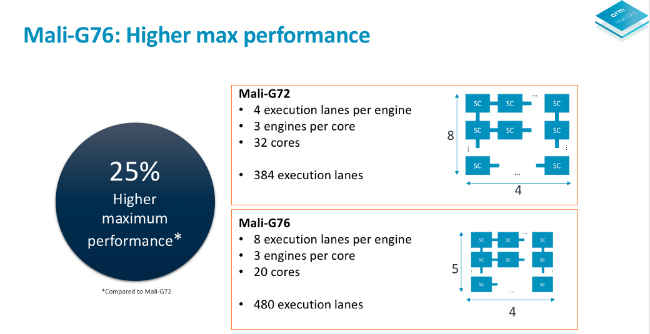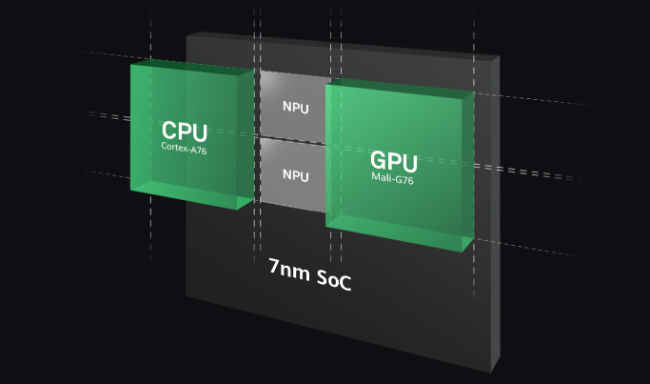A closer look at Huawei HiSilicon Kirin 980: Android goes 7nm
Huawei Consumer Group's Senior Product Director, Brody Ji for a briefing about the Kirin 980. The following inputs are based on the interaction and other information available in the web.
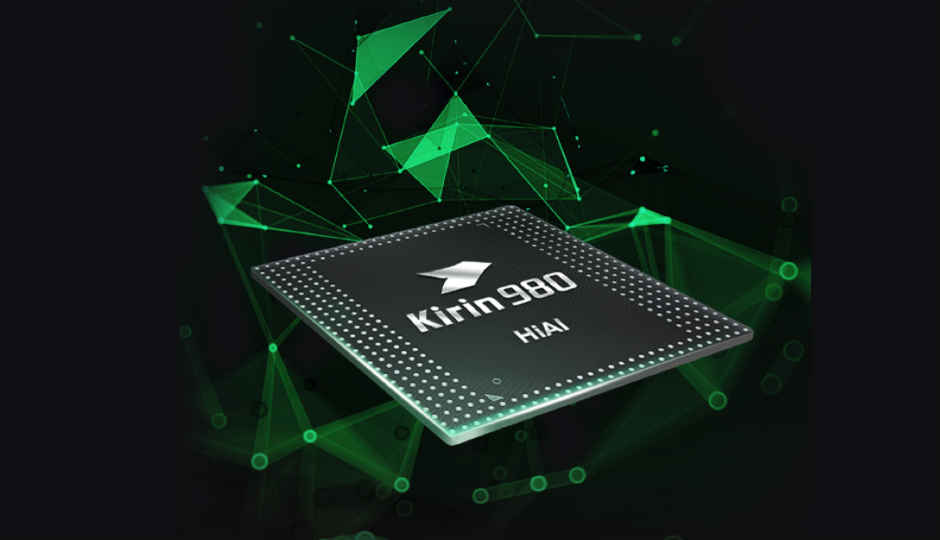
At Huawei’s keynote speech, CEO Richard Yu unveiled the HiSilicon Kirin 980, the silicon that will power the future flagship Huawei and Honor devices. Yu claimed it as the industry’s first 7nm chipset and drew heavy comparisons with Qualcomm’s present flagship Snapdragon 845 chipset as well as its own Kirin 970 that powered 2018 flagships like the Huawei P20 Pro. In a product briefing in Dubai, the company also took a shot at the newly launched iPhones claiming the Kirin 980 will be better than the A12 Bionic powering Apple’s shiny new toys. Better in what ways? The company didn’t specify.
 Survey
SurveyDigit met with Huawei Consumer Group's Senior Product Director, Brody Ji for a briefing about the Kirin 980. The following inputs are based on the interaction and other information available in the web.
Both the Kirin 980 and the A12 Bionic are manufactured on TSMC’s new 7nm process. Both chipsets have equal logic density packing 6.9 billion transistors. Both are also custom made, tuned to run the best on their respective products. The Kirin chipsets are a key strategic component in all of Huawei and it’s sub-brand Honor’s devices. Same for Apple’s A-series chipsets. Samsung too is in the same league with it’s own custom-designed Exynos chipsets. Having one’s own chipset allows granular level modifications giving total control to the manufacturer. On the other hand, mass-market solutions like Qualcomm and MediaTek’s offerings power the rest of the smartphones in the world.
Now, historically Huawei has always played catch-up with the rest of the industry. The stars didn’t align for the company’s chipset division for the last two generations — The Kirin 960 and the Kirin 970. The Kirin 960 was manufactured on a 16nm process when the rest of the world had already moved on to 10nm based chipsets like the Snapdragon 835 and the Samsung Exynos 8895. Naturally, it didn’t fare as well as compared to its rivals in the Android space, never mind Apple’s A10 on the iPhone 7 and the iPhone 7 Plus that year, which was visibly faster than all the others. By launching the Kirin 970 next year, Huawei did catch up with the 10nm advantage, but the company couldn’t acquire the latest ARM Cortex designs. Once again, the others had a clear advantage owing to the latest CPU microarchitecture. The Snapdragon 845, currently used in flagship Android devices like the OnePlus 6 and the LG G7+ ThinQ relies on semi-custom Kryo 385 cores, based on ARM’s Cortex A75 and Cortex A55 cores. The Kirin 970, on the other hand, had to make do with older Cortex A73 and Cortex A53 cores. It once again couldn’t match up to the likes of the current generation chipset, in terms of performance.
Note that benchmark apps will reveal the Kirin 970 competes neck-to-neck with the Snapdragon 845, but a detailed expose by noted hardware reviewer AnandTech revealed Huawei hasn’t been completely honest about its performance. Turned out, Huawei had been cheating on benchmarks by artificially boosting the chipset performance every time it detected a benchmark app running. Removing that from the equation shows just how underpowered the Kirin 970 is, as compared to the Kirin 980. You can see for yourself in the graph published by 3DMark.
Image: UL
In that context, claiming the Kirin 980 is more powerful than Apple’s A12 Bionic that has so far beaten the A11 Bionic from last year in benchmark scores, which in turn was miles ahead of the Snapdragon 845. But could it really be possible?
A 75 percent improvement in CPU performance?
While the last generations of Huawei’s silicon design didn’t go as expected, 2019 is going to be a special year for the company. As AnandTech notes, the stars aligned perfectly for the Kirin 980 this year. ARM’s latest design and TSMC’s upgrade to 7nm manufacturing process happened just in time for HiSilicon to leverage the new technology for the Kirin 980. As a result, the Kirin 980 is built on an industry-first 7nm process (the same as Apple’s) and features ARM’s latest Cortex A76 cores. ARM claims that the A76 provides a notable leap in performance and power efficiency in comparison to its predecessor.
Image: Huawei
In a turn of events, the Kirin 980 ticks off a lot of industry-first. The HiSilicon Kirin 980 is the first to use the Cortex-A76 cores. It’s the first to use the new Mali-G76 GPU. It’s the first to sport a 1.4Gbps Cat 21 modem and is the first to have support for 2133Mhz LPDDR4X DRAM. Being the first doesn’t always mean better, but in this case, the Kirin 980 is indeed using the latest industry standards seen in Android smartphones, at least. Apple licenses ARM technology to create its own custom cores which deliver a maximum clock speed of 2.49GHz through two high-performance cores that Apple named Vortex. In comparison, the Kirin 980 can achieve up to 2.6GHz thanks to two Cortex-A76 based ‘Super Cores’. On paper, that could mean the Kirin 980 could outperform Apple’s offering, but that might not be the case if you take performance readings from day-to-day- operations. In that case, thermal constraints, and other bottlenecks come into play that affect the overall chipset performance. The peak speed is achieved only for a very short period of time, it’s the overall sustained performance that’s more important.
Image: Huawei
In that regard, the Kirin 980’s CPU cores are divided into three sections, taking advantage of ARM’s new DynamIQ CPU configurations. There are two Cortex-A76 based super cores clocked at 2.6GHz for peak performance, two Cortex A76-based medium cores clocked at 1.92GHz for sustained performance, and four Cortex-A55 based small cores clocked at 1.8GHz, for low-power tasks. This way, the Kirin 980 can apparently spread out the tasks in the most energy-efficient manner. Earlier, in the big.LITTLE arrangement, things that would require medium amount of resources would still have to run on peak speeds, thereby taking a penalty on power efficiency. A medium cluster helps solve that, making sustained performance less power hungry.
Image: Huawei
Huawei even had a chart to show which core will do what. Based on that chart, it turns out, the 2.6GHz super cores are only used during heavy-load gaming or when apps require a boost (boost when benchmark apps are detected, to be precise?). Huawei uses a flex-scheduler to distribute the tasks efficiently amidst the cores. Other operations like navigation, music and video playback happen on the energy-efficient cores at 1.8GHz. Things like light gaming and camera may also use the medium cores for sustained performance. As a result, the energy-efficient Cortex A-55 cores will be used the most, followed by the underclocked Cortex-A76 cores in the medium cluster. The super cores will only be used in short bursts when needed.
It certainly sound ingenuous. Huawei claims the Kirin 980 can launch apps much faster than the Snapdragon 845. Once again, it had charts to compare. Most-used apps like Facebook, WhatsApp, Instagram, Messenger, YouTube, and the likes all opened much faster than Snapdragon 845-powered devices according to Huawei’s charts. These are numbers shared by Huawei and have been achieved under ideal situations. We don’t yet know the amount of physical memory Huawei took into account while computing the chart.
Image: Huawei
Based on the advances in chipset technology, the Kirin 980 is, according to Huawei, 75 percent more powerful and 58 percent more power efficient as compared to the Kirin 970. And in comparison to the Snapdragon 845, the Kirin 980 reportedly has 37 percent better performance and is 32 percent more power efficient. These numbers will be confirmed when Huawei launches the Mate 20 smartphone at an upcoming event in October.
A 46 percent boost in graphics and 178 percent more power efficient
Image: ARM
As we stated before, the Kirin 980 struck out lucky with ARM announcing all new IP and TSMC entering mass-production of 7nm chipsets around the same time. Benefiting from this divine alignment of stars is also the graphical prowess of the Kirin 980. The chipset relies on the new Mali-G76 GPU that ARM claims delivers 1.5X better performance while gaming. ARM didn’t specify the base for this comparison, but we’re assuming they are talking about the previous generation. The GPU has 30 percent more performance density and 30 percent more power efficiency. This is achieved by widening the cores so that there is a big jump in performance throughput, by taking less than double the silicon area. The GPU is based on the latest iteration of ARM’s Bitfrost microarchitecture. In essence, the Mali G76 has eight execution lanes per engine, and three engines per core. There are a total of 20 cores, which means the GPU has 480 execution lanes, thereby doing more, with less silicon. In comparison, the current Mali-G72 has 384 execution lanes (4 lanes per engine and 3 engines per core, for a total of 32 cores)
Image: ARM
However, if you compare the clock speed of the earlier Mali-G72 and the new Mali-G76, the latter might seem slower. The Mali-G72 had a peak clock speed of 747MHz, but operating at that frequency would require too much power for mobile SoCs and wasn’t sustainable. In comparison, the Mali-G76 is clocked at 720MHz which can be sustained for longer owing the efficiency figures and the performance boost. The GPU performance will be further boosted in certain games like PubG Mobile as it is optimised for GPU Turbo.
The big surprise here is the whopping 178 percent boost in energy efficiency as compared to the Mali-G72 on the Kirin 970. When we tested the Kirin 970 on Gamebench using the Huawei Nova 3 while playing PubG Mobile, we found the chipset had an average power draw of 3112.6mW. The phone was able to achieve 28FPS on a median, after 15 minutes of gameplay. This means, the Kirin 970 drew 111.16mW/FPS. Similarly, the Snapdragon 845-powered Poco F1 drew 107mW/FPS. With the Kirin 980’s promised jump of 178 percent efficiency, we can expect the figures to be around 86.7mW/FPS. That number is certainly lesser than what the current Adreno 630 on the Snapdragon 845 can achieve. This is a probable figure extrapolated using the numbers shared by Huawei. We will confirm the same once a Kirin 980-powered device lands in our hands.
In comparison, Apple’s A12 Bionic boasts of a four-core GPU that promises a 50 percent boost in performance. The GPU is designed by Apple and can do tessellation and multi-layer rendering up to 50 percent faster and provide lossless memory compression. Apple called upon the stage the Chief Game Designer of Bethesda to show off the GPU’s capabilities in Elder Scrolls: Blade, a first-person shooter RPG game that’ll hit the App Stores later this year. The game-play showed incredibly rich graphics, almost comparable to a high-end gaming console, with 40 percent faster post-processing and rendering. The additional GPU cores come into play to render more effects.
Dual NPU with a promise of 134 percent improvement in handling AI workloads
Being made on a 7nm manufacturing process, the Kirin 980 also had die-size left for a dedicated NPU. Huawei actually introduced the trend of having a dedicated co-processor to handle machine learning workloads, and this time, the Kirin 980 has space for two such co-processors. The dual NPU can crunch through 4500 inferences per minute. Inferences here is the final result of crunching through a machine learning workload. It’s the ability for the smartphone to recognise the object after crunching through various other images that look similar. In comparison, the Kirin 970 could perform 2030 inferences per minute. A good way to determine the capability of a neural-network co-processor is to run a neural-network model like Resnet or Google’s Inception V3 and determine how fast it can crunch through the database.
The 134 percent improvement over the Kirin 970 is based on the fact that now instead of one, there are two blocks to handle one workload at a time. This means the Dual NPU can process the workload faster than the a single block NPU.
A new improved ISP capable of multi-pass noise reduction
The Kirin 980 also features an improved Image Signal Processor (ISP) that is responsible for processing images taken from the camera. The ISP, as a result, is an integral part of a smartphone.. In that regard, the ISP on the Kirin 980 seems to be catching up with the competition. It boasts of ‘multi-pass noise reduction’ that sounds awfully similar to the Snapdragon 845’s ‘multi-frame noise reduction’. In both cases, the ISP can reduce noise and sharpen the images without blurring out the details. More importantly, the ISP is the first to have support for shooting 10 bit HDR videos, which again is there in competing SoCs.
All talk and no action? Wait for the Huawei Mate 20
The Huawei Mate 20 will be the first smartphone to be powered by the Kirin 980. That will be followed by a myriad of other Huawei and Honor smartphones of course, but all the tall claims made by Huawei will be confirmed when the flagship phone launches in October. The Huawei Mate 20, like the P20 Pro, may also rock a triple-camera unit, according to a image that leaked on the web. Furthermore, there seems to be no fingerprint sensor on the body, so it’s safe to assume the Huawei will also introduce an in-display fingerprint sensor in the flagship device. Under the hood will of course be the Kirin 980 SoC. There’s also a Huawei Mate 20 Pro and a Mate 20 RS Design rumored to be under work. The Mate series phones have introduced the new Kirin chipsets over the years and this year is not going to be any different. The company has more or less confirmed the chipset will debut with the Mate 20. What’s surprising this year is the Mate 20 may come to India, making it the first Mate series smartphone to be sold in the Indian market.
Based on what Huawei claims the Kirin 980 can do, the Mate 20 can be considered a force to reckon with, but whether it can topple the new iPhones or even a Snapdragon 845-powered flagship remains to be seen.
